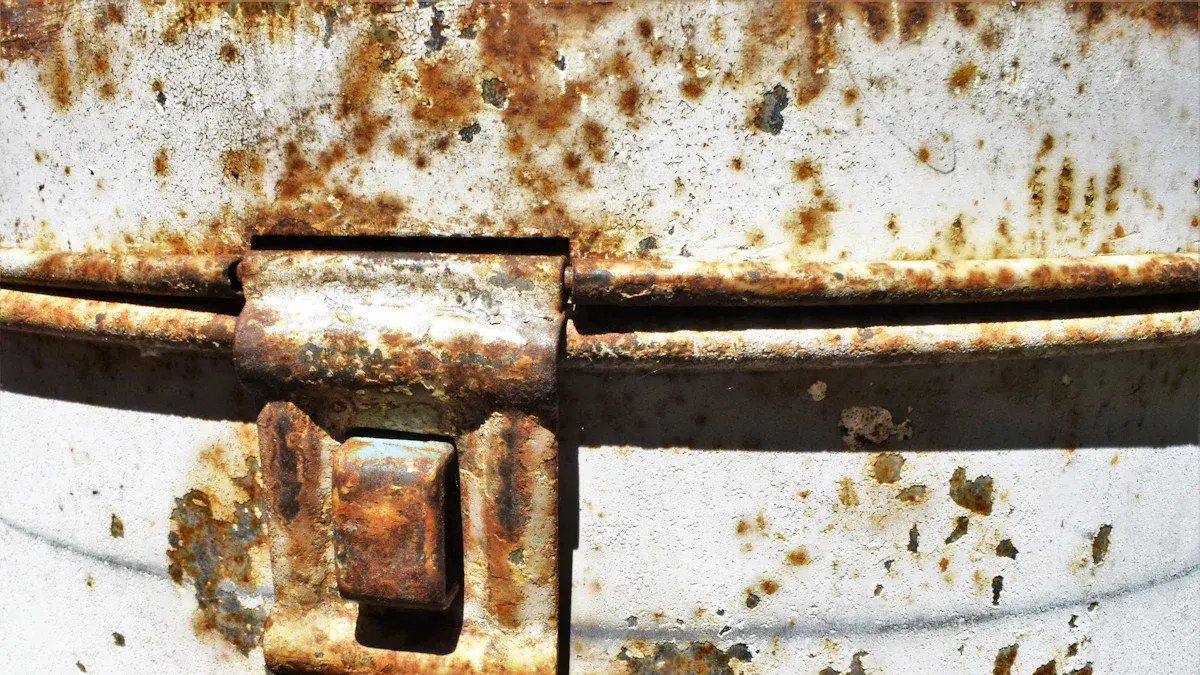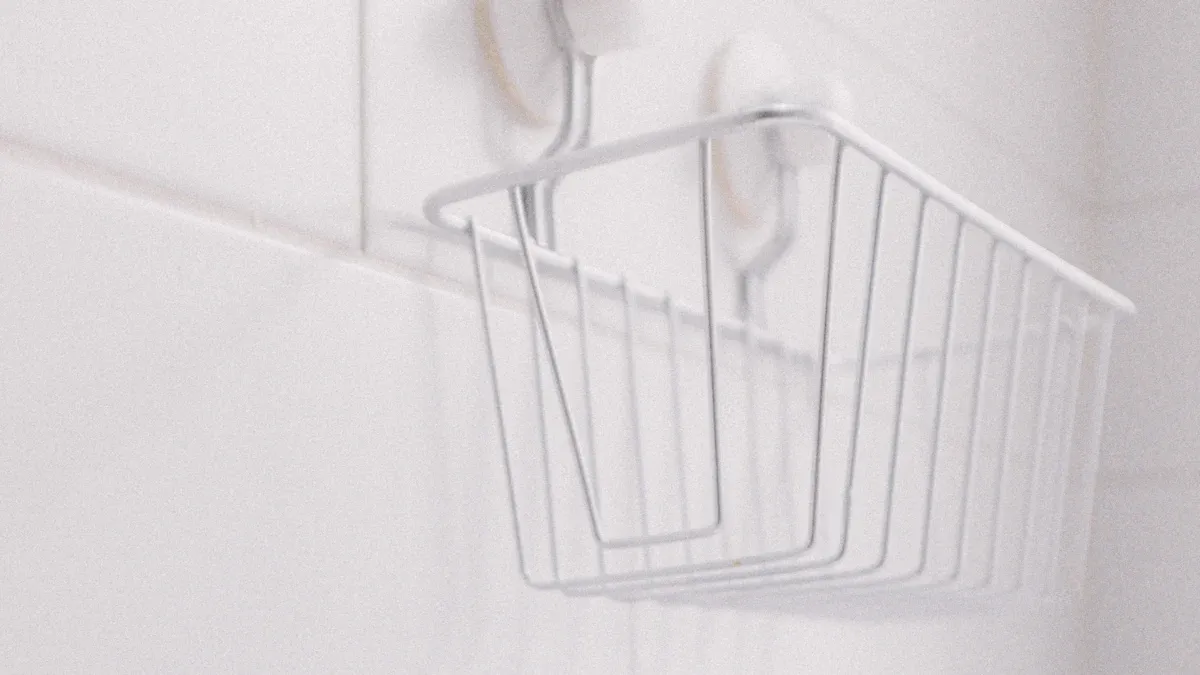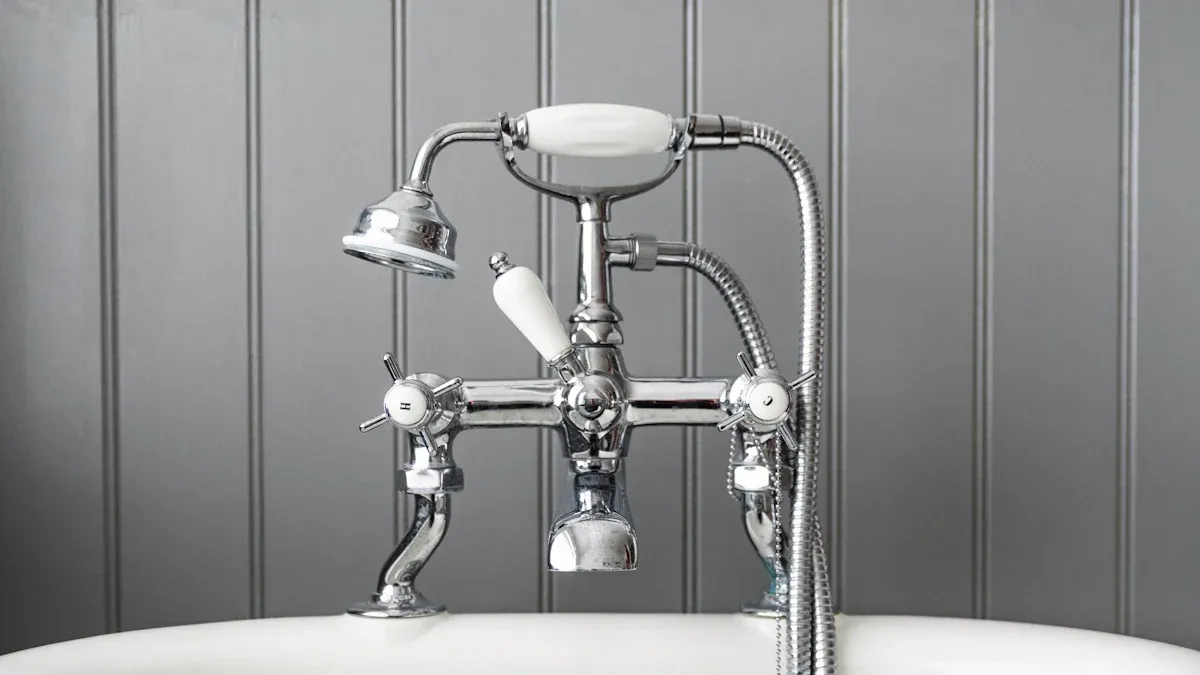
 FEEDBACK
FEEDBACK
If you are interested in our products and want to know more details, please leave a message here, we will reply you as soon as possible.


Stainless steel is very good at not rusting in bathrooms, but it can still rust a little. Many people pick stainless steel for bathroom cabinets and fixtures. It looks modern and clean. It also lasts a long time if you take care of it. Its soft shine hides water spots and fingerprints well.
You can clean it with just a soft cloth. The surface keeps away bacteria better than other materials.
The chromium layer keeps out water, so stainless steel works well in wet places.
Knowing what changes rust resistance and how to care for your cabinets helps them stay nice for many years. Langdeng’s stainless steel bathroom cabinets show how good quality and design fit in a modern bathroom.

Stainless steel stands out as a top choice for bathroom environments. You see it in many modern homes because it resists moisture, lasts for years, and looks stylish. The smooth, shiny surface fits well with today’s bathroom designs. When you choose stainless steel, you get a material that keeps its shape and shine, even with daily use and lots of water.
Langdeng leads the way in stainless steel bathroom cabinets. Since 2002, this brand has built a strong reputation for quality and innovation. Their cabinets combine luxury with practical features. You can trust Langdeng products to stay beautiful and strong, even in humid bathrooms.
Stainless steel contains at least 10.5% chromium. This element forms a thin, invisible layer on the surface. The layer protects the metal from water and chemicals. If you scratch the surface, the layer repairs itself when it meets air. This self-healing feature keeps your cabinets safe from rust. Nickel and molybdenum in the alloy make the protection even stronger, especially in bathrooms where moisture is always present.
Tip: Regular cleaning helps keep the protective layer strong. Use a soft cloth and avoid harsh chemicals.
Stainless steel also resists bacteria and mold. The smooth surface does not let dirt or germs stick easily. This makes your bathroom cleaner and healthier.
Not all stainless steel is the same. The grade tells you how much chromium and nickel the metal contains. Grade 304 is the most popular for bathroom cabinets. It has about 18% chromium and 8% nickel. This mix gives it excellent rust resistance and strength. Grade 304 keeps its shine and does not rust easily, even in wet bathrooms.
Here is a quick comparison:
Feature | Grade 304 Stainless Steel | Grade 201 Stainless Steel |
|---|---|---|
Chromium Content | 18–20% | 16–18% |
Nickel Content | 8–10.5% | Lower |
Rust Resistance | High | Moderate |
Best Use | Bathrooms, kitchens | Dry indoor areas |
You should look for cabinets made from grade 304 stainless steel. Langdeng uses high-quality materials to make sure your bathroom stays rust-free and stylish for years.

Bathrooms have a lot of moisture in the air. When you take a shower, steam spreads everywhere. This steam lands on your stainless steel cabinets and fixtures. Stainless steel has a special chromium oxide layer that protects it. But too much moisture can make this layer weaker. If the layer gets scratched or if you use lower-grade stainless steel, water can touch the metal underneath. This makes rust form faster. Hard water leaves minerals like iron and calcium behind. These minerals help rust appear more quickly. Good airflow lowers humidity. Always turn on your bathroom fan or open a window when you can.
Tip: Keep your bathroom aired out so your stainless steel stays shiny and does not rust.
The way you clean stainless steel is important. Some cleaning habits can cause rust to start. Using rough cleaners or scrubbing pads can scratch the surface. Scratches make weak spots where rust can begin. Leaving water or cleaner on the surface after wiping also causes rust. Some cleaners have strong chemicals or chlorides that hurt the protective layer. If you do not clean often, dirt and minerals build up. This traps moisture against the metal.
Try not to make these cleaning mistakes:
Using rough tools or powders
Not drying after cleaning
Using strong chemicals or bleach
Not cleaning often
Physical damage is another reason for rust. Scratches, chips, or dents break the chromium oxide layer. Without this layer, water and air touch the metal. In bathrooms, rust can show up fast. Even small scratches from jewelry or cleaning tools can start rust. Always be gentle with your cabinets and use soft cloths to clean. Some stainless steel has extra coatings for more protection. But being careful is still the best way to stop damage.
Remember: Be gentle with your stainless steel so it looks new for a long time.
You can keep your stainless steel bathroom cabinets looking new with easy cleaning. Wipe the surfaces with a soft, damp cloth every day. This helps remove water spots and dust before they build up. Each week, use gentle cleaners like dish soap and warm water. For tough stains, try a baking soda paste or a mix of white vinegar and water. Some commercial cleaners, like Lysol® Power Bathroom Cleaner or Bar Keepers Friend, are safe for stainless steel.
How to clean your stainless steel bathroom cabinet:
Wipe the surface with a soft cloth first.
Spray a safe cleaner until the surface is wet.
Wait 15-20 seconds for stains, 30 seconds to sanitize, or 10 minutes to disinfect.
Wipe off with a clean, soft cloth.
Always wipe in the direction of the grain to stop streaks.
Tip: Dry the surface after cleaning. This stops water spots and keeps your cabinet shiny.
Langdeng says regular cleaning keeps the cabinet shiny and strong. This routine helps the protective layer stay strong and keeps your bathroom healthy.
Some products and tools can hurt your stainless steel cabinets. Do not use bleach, ammonia, or any cleaner with chlorine. These chemicals can cause pitting and rust. Never use steel wool, rough powders, or hard scrub brushes. They scratch the surface and leave tiny bits that may rust.
Substance/Chemical to Avoid | Reason/Effect on Stainless Steel |
|---|---|
Bleach | Causes surface pitting and corrosion |
Hydrochloric acid | Damages the protective layer and causes discoloration |
Chlorides | Leads to rust and surface damage |
Abrasive powders | Damage the protective film |
Steel wool | Leaves fine particles that rust |
Oven cleaners | Strip the protective layer |
Note: Always pick gentle cleaners and soft cloths. Stay away from harsh chemicals and rough tools to protect your stainless steel.
You can help your stainless steel bathroom cabinets last longer with simple habits. Wipe down surfaces after each use, especially if water splashes on them. Good airflow helps too. Open a window or use a fan to lower humidity in your bathroom. This keeps moisture from sitting on your cabinets.
Check your cabinets and fixtures every week for early signs of rust or corrosion. Look under sinks and around joints for leaks or water spots. If you see any, clean and dry the area right away. Have a professional check your cabinets once a year to find problems early.
Remember these tips:
Clean and check your cabinets every week.
Wipe dry after each use.
Use only safe, gentle cleaners.
Make sure your bathroom has good airflow.
Do not put non-rust-proof metal organizers near your cabinets.
Langdeng’s stainless steel bathroom cabinets are made for easy care. By following these steps, you help your cabinets stay beautiful and rust-free for many years.
You might notice small rust spots on your stainless steel bathroom cabinets or fixtures. Do not worry. You can remove these spots with simple tools and household items. Follow these steps to restore the shine:
Start by cleaning the surface with dish soap and warm water. This removes dirt and grime.
Make a baking soda paste. Wet a sponge, sprinkle baking soda on the rust, and gently scrub along the grain of the steel. Let the paste sit for up to 30 minutes if needed.
Try another method by covering the rust with coarse salt. Squeeze lemon juice over the salt, then scrub with the grain. Rinse quickly so the acid does not harm the finish.
Use a commercial cleaner like Bar Keepers Friend if the rust remains. Wet the area, sprinkle the cleaner, scrub with the grain, let it sit as directed, then rinse.
Always rinse the surface with clean water and dry it with a microfiber cloth to prevent water spots.
Tip: Always scrub with the grain of the stainless steel. This keeps the finish smooth and shiny. Use a toothbrush for hard-to-reach spots.
These methods work well for small rust spots. They use items you likely have at home and take only a few minutes.
Sometimes, rust problems go beyond simple cleaning. You should look for these warning signs:
Rust that goes through the protective layer or stains nearby surfaces.
Scratches that expose the steel under the plating.
Rust that affects how your cabinet doors, handles, or drawers work.
Visible rust or discoloration that keeps coming back, even after cleaning.
Broken or frayed metal parts, like supply lines or hardware.
Severe corrosion that threatens the strength of the cabinet or fixtures.
Mold or corrosion on hardware, even with good ventilation.
If you see any of these signs, you should contact a professional. Experts can help with rust caused by extreme moisture or when you need custom solutions for high-humidity bathrooms. They can also recommend advanced materials and protective finishes to keep your bathroom looking its best.
Note: Regular inspection and cleaning help you catch rust early. Quick action keeps your stainless steel cabinets strong and beautiful for years.
Stainless steel bathroom cabinets, such as Langdeng’s, are strong and resist rust well. Studies say good 304 stainless steel can last more than 20 years in most bathrooms. You just need to clean them often and not use harsh chemicals. Picking a trusted brand and caring for your cabinets keeps your bathroom looking nice and free from rust for a long time.
Yes, stainless steel can develop rust if you scratch the surface or use harsh cleaners. You can prevent rust by cleaning gently and drying the cabinets after use. High-quality brands like Langdeng use materials that resist rust very well.
You should use a soft cloth and mild soap with warm water. Always wipe in the direction of the grain. Dry the surface after cleaning. Avoid bleach, steel wool, and rough powders.
Water spots appear when water dries on the surface. Minerals in the water leave marks. You can prevent this by wiping the cabinet dry after each use. Use a microfiber cloth for best results.
Yes, Langdeng designs its cabinets for humid spaces. The high-grade stainless steel resists moisture and keeps its shine. You get both style and durability in your bathroom.